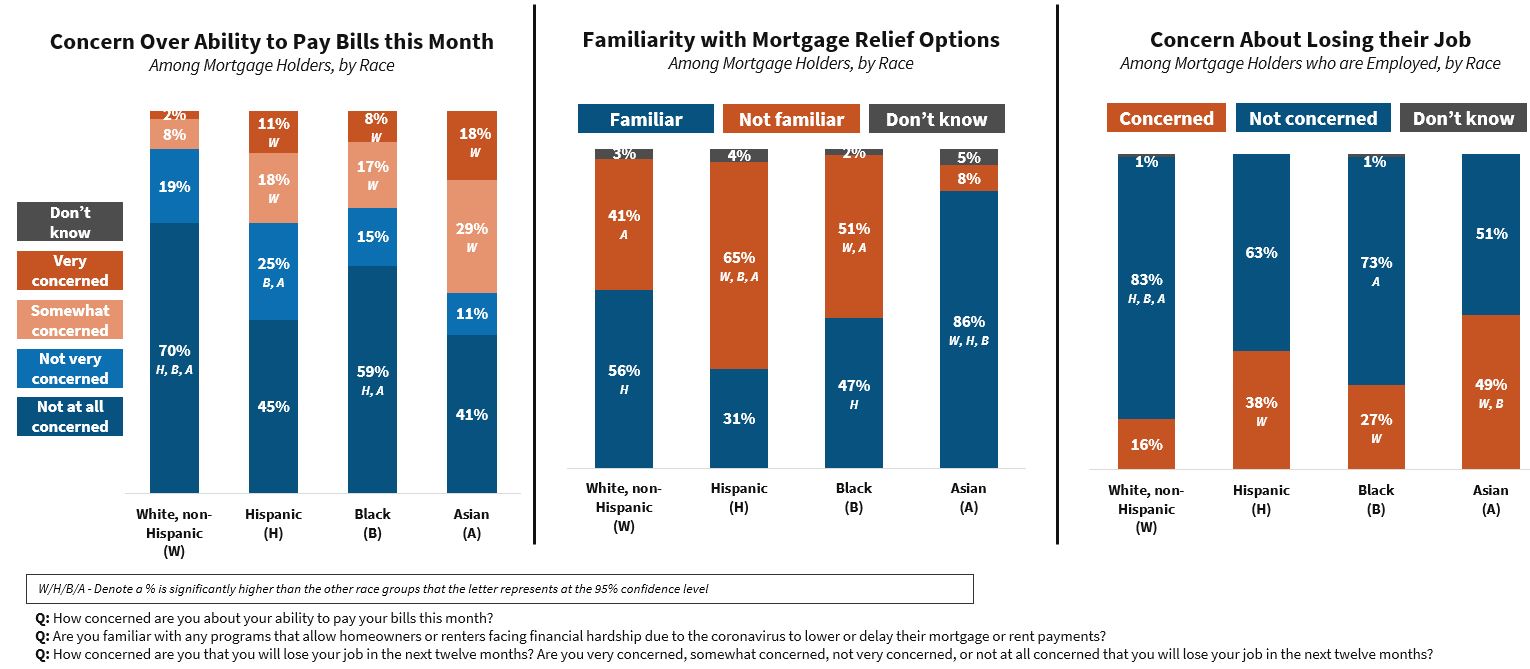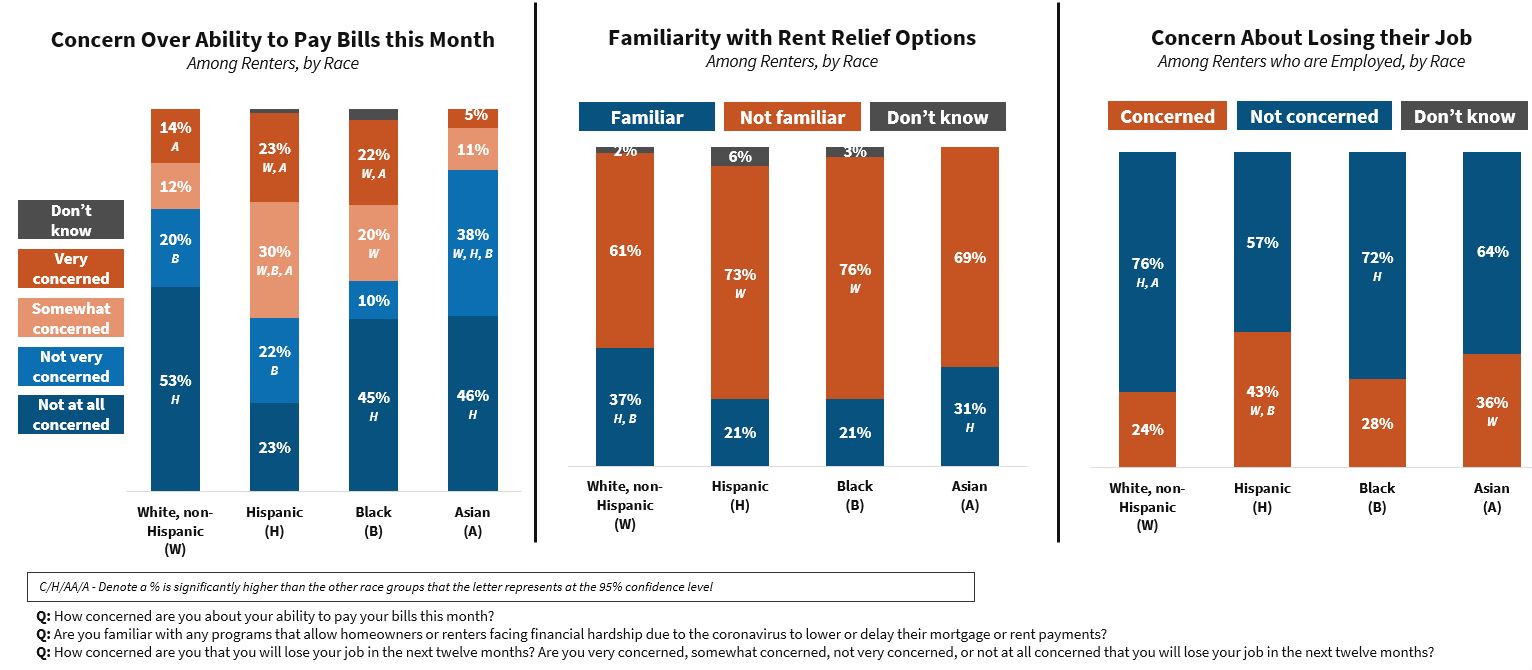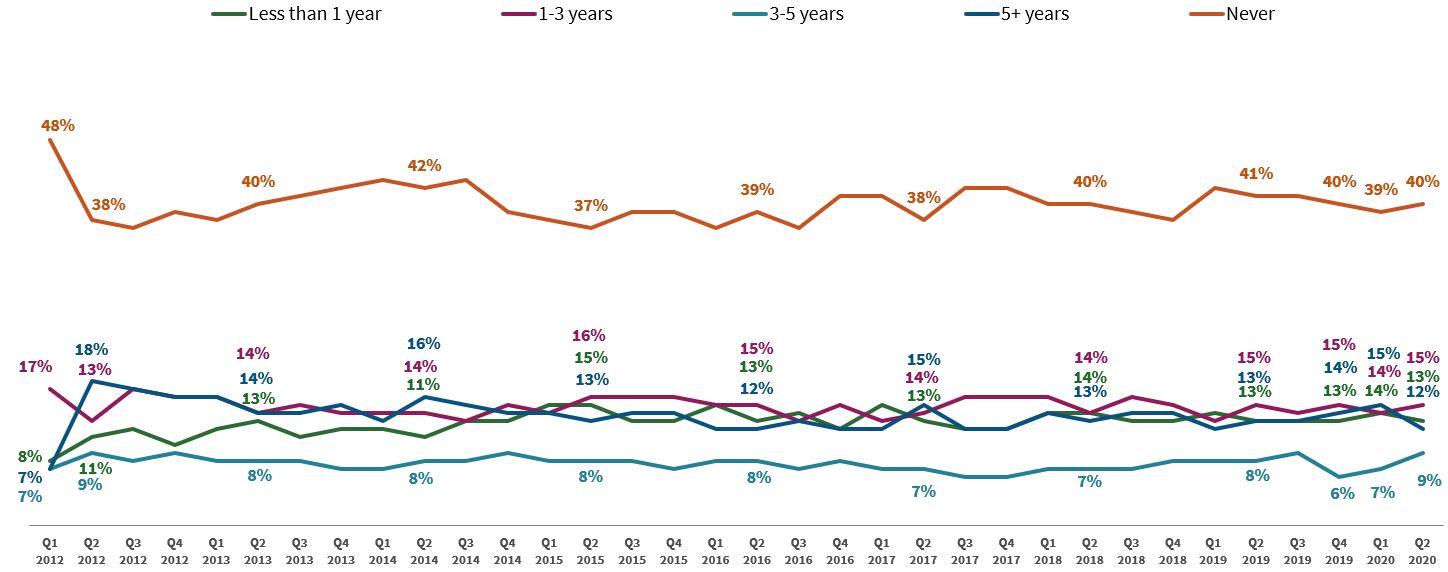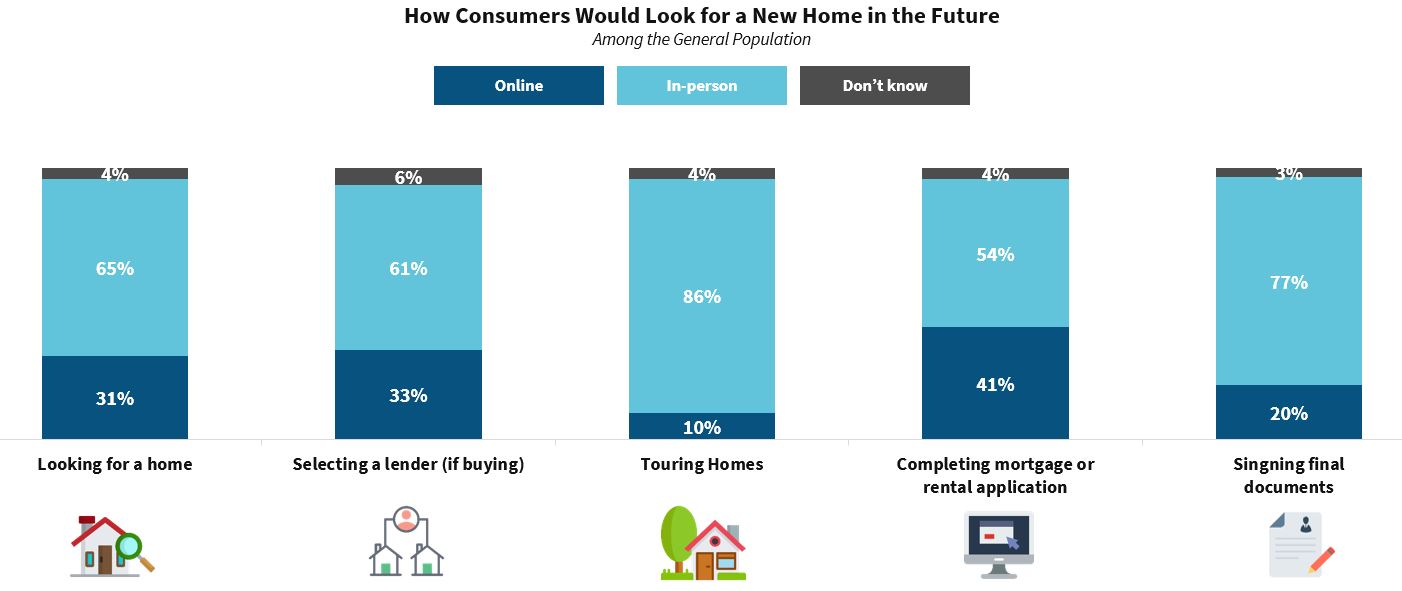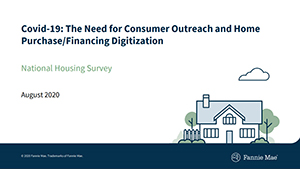COVID-19: The Need for Consumer Outreach and Home Purchase/Financing Digitization
The upheaval to daily life resulting from COVID-19 has been felt by virtually everyone in our society. Many have experienced financial distress and the upending of their education, career, retirement, or other life plans. Through our National Housing Survey®*, we sought to identify and track shifts in consumers' short-, medium-, and long-term financial and housing needs and actions in the wake of the pandemic's onset. Our first study to this end was conducted from April-June 2020 and yielded three key findings, discussed in detail below.
Consumers' familiarity with mortgage and rent relief options was not widespread and was particularly low among populations with immediate financial and job concerns.
Roughly one-fifth of surveyed consumers expressed concern about imminent financial distress, but most were unfamiliar with available mortgage or rent relief options. For homeowners who have a Fannie Mae-owned mortgage and who have been impacted by COVID-19, these options include reduced or suspended mortgage payments for up to 12 months. Renters who live in Fannie Mae-financed multifamily properties and are unable to pay rent due to COVID-19 are afforded eviction protection if the property owner’s loan is in forbearance.
|
For those concerned about their ability to pay their home mortgage or rent due to the COVID-19 pandemic, relief options are available. You can find current information and resources for homeowners and renters as well as guidance for lenders and servicers on Fannie Mae's Here to Help website. |
Among all mortgage borrowers surveyed, those with lower incomes were more likely to be concerned about paying bills and were less familiar with relief options. White mortgage borrowers were less likely than others to be concerned about meeting their financial obligations and losing their jobs. Asian mortgage borrowers were much more likely than White, Hispanic, and Black mortgage borrowers to say they were familiar with mortgage relief options1.
Among renters, those with lower incomes were more likely to be concerned about meeting their financial obligations compared to those with higher incomes. Hispanic and Black renters were more likely to be concerned about paying their monthly bills than other renters.
Mortgage Holders by Race (click image below to view full size)
Renters by Race (click image below to view full size)
Consumers' expected timelines until their next move did not change significantly from the historical trend for the population as a whole.
Most surveyed consumers expressed that it’s a bad time to move due to the coronavirus, though that belief improved over the quarter. Additionally, due to the pandemic, job concerns did get significantly worse in the second quarter, and those who were concerned about losing their job were more likely to think it's a bad time to move. Despite these concerns, consumers are not yet telling us they expect to change their moving behavior.
General Population (click image below to view full size)
Appetite among respondents remained modest for engaging in homebuying and mortgage activities digitally, as opposed to in-person. However, there were signs that such interest increased as the quarter progressed, particularly for mortgage applications.
In general, consumer shopping habits have shifted from in-store to online amid the pandemic. However, consumers tended to say they would prefer to perform homebuying and renting activities in-person. Interest in online options was strongest for selecting a lender and completing an application online, and grew during the quarter. Since 2018, mortgage holders' preferred method for completing home shopping activities has remained relatively unchanged. Those with a mortgage remain more likely than renters to prefer to complete key home shopping activities online.
Mortgage Holders (click image below to view full size)
Key implications for the industry:
- Consumer awareness campaigns and borrower and renter outreach should continue in order to help ensure those who suffer a financial hardship are aware of their options.
- Consumers' largely static mobility expectations suggest little sustained impact from the pandemic on the overall volume of housing activity; however, one consequence may be that more consumers adapt by looking for lower-cost housing than they may have pre-pandemic.
- The industry should continue to ramp up digitization efforts but not overestimate the pace of growth in demand for and usage of digital resources.
Upcoming releases will continue to track and expand on our understanding of consumers' financial and economic concerns and will look into potential shifts in housing preferences and demand.
Doug Duncan
SVP and Chief Economist
August 12, 2020
About Fannie Mae's National Housing Survey
The most detailed consumer attitudinal survey of its kind, Fannie Mae's National Housing Survey (NHS) polls approximately 1,000 respondents monthly via live telephone interview to assess their attitudes toward owning and renting a home, home and rental price changes, homeownership distress, the economy, household finances, and overall consumer confidence. Homeowners and renters are asked more than 100 questions used to track attitudinal shifts, six of which are used to construct the HPSI (findings are compared with the same survey conducted monthly beginning June 2010). As cell phones have become common and many households no longer have landline phones, the NHS contacts approximately 70 percent of respondents via their cell phones (as of January 2018). For more information, please see the Technical Notes. Fannie Mae conducts this survey and shares monthly and quarterly results so that we may help industry partners and market participants target our collective efforts to support the housing market. Interviews in the second quarter of 2020 were conducted by PSB and Opinion Access, in coordination with Fannie Mae.
* The monthly National Housing Survey is a nationally representative survey of the U.S. general population. Full details on the survey data quality and weighting can be found in the NHS Technical Notes. Mortgage borrowers included in the survey population are not limited to those with a Fannie Mae-backed mortgage.
1 Despite the survey's fairly small sample size for Asian mortgage borrowers (n=63), the differences in results for this question from each of the other three racial groups were all statistically significant at the 95% confidence level.
Opinions, analyses, estimates, forecasts and other views reflected in this commentary should not be construed as indicating Fannie Mae's business prospects or expected results, are based on a number of assumptions, and are subject to change without notice. How this information affects Fannie Mae will depend on many factors. Changes in the assumptions or the information underlying these views could produce materially different results.

